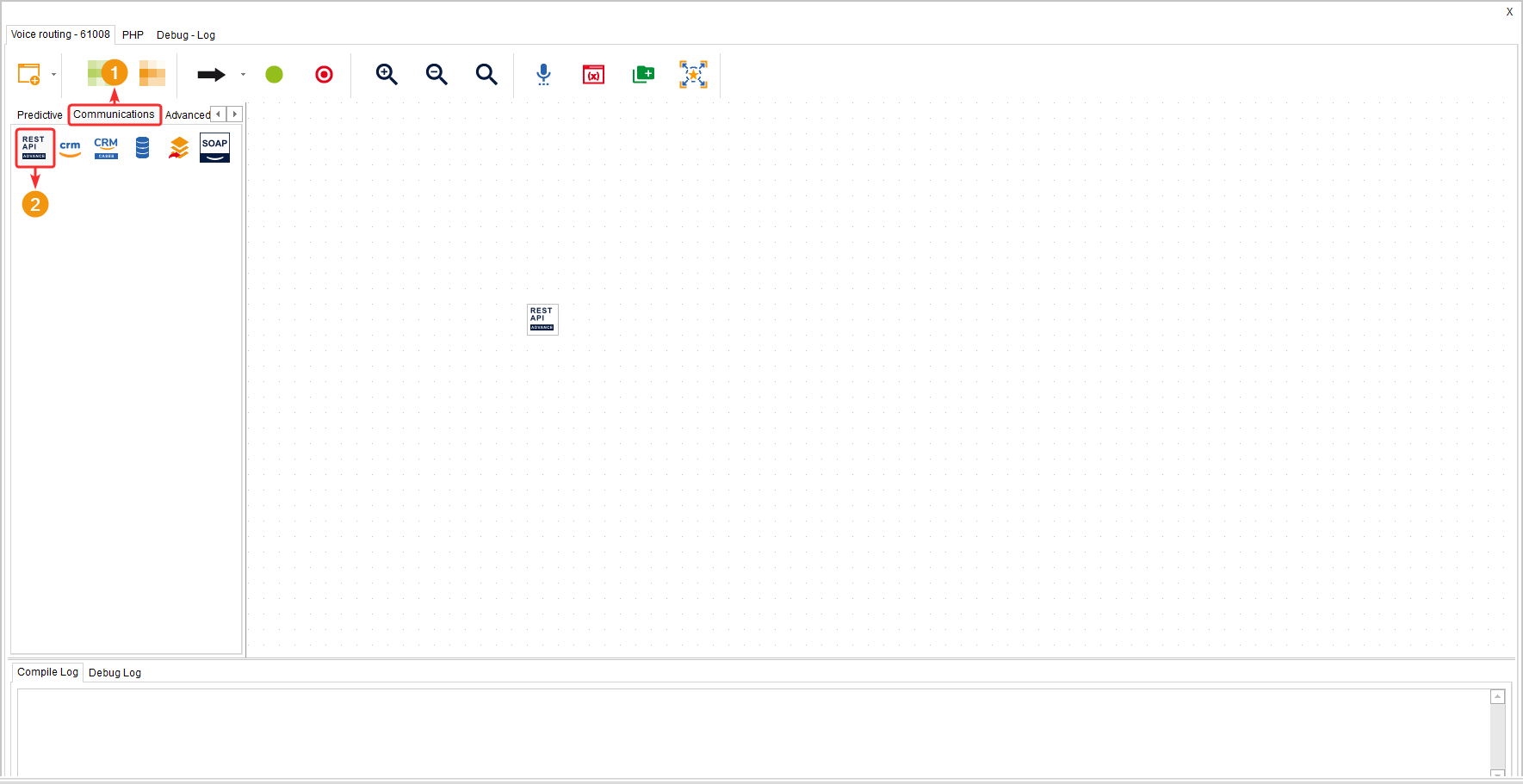This component allows consuming APIs using REST within wolkvox Studio flows.
It belongs to the “Communications” component group and is available in all types of routing (Voice, Interaction, Chat, CRM + webhook) and Agent Scripting.
REST API is a way to connect applications to share information and perform tasks.
It is based on the HTTP protocol to allow systems to interact with each other efficiently and in a scalable manner.
REST API has various methods available to perform different tasks such as updating information, deleting items, retrieving data, etc.
The component allows consuming APIs using the GET, POST, PUT, and DELETE methods.
- PUT method: It is used to update information of an existing resource on the server. Once the PUT request is made, the existing resource is overwritten with the new information sent in the request.
- POST method: It is used to send information to the server. For example, it can be used to send files or form data.
- GET method: It is used to retrieve information about a resource. Once the request is made, the response is returned with the requested information.
- DELETE method: It is used to delete a resource on the server. For example, within wolkvox APIs, there is one for deleting agents.
This component allows writing the body format in two ways: “form-data” and “raw”.
- form-data: It is mainly used for sending form data. It sends the request body in plain text format. It even allows including attachments such as files.
- raw: It is mainly used for sending data in a specific format, such as JSON, XML, or plain text. The choice of body format depends on the type of data sent in the request.
Control timeout: It waits for a maximum of 60 seconds to get a response from the API; if the API consumption is not successful within that time, the component returns an error message called “Error consuming www.apiclient.com”.
If you want to go to the APIs documentation, click here.
Authorization Token Length Limit in the REST API Component #
In the REST API component of wolkvox Studio, it is crucial that the authorization token does not exceed 257 characters. If the token surpasses this limit, there is a risk of it being truncated, which would prevent the authorization from working properly and result in an API response error.
Recommended Solution: If the token has more than 257 characters and its length cannot be reduced, the token should be assigned as a variable in wolkvox Studio. Below is an example of how to do this:
Authorization:’.$token
In this case, the value of the variable must be calculated beforehand using the “Variable Calculation” component in wolkvox Studio.
This solution allows for the handling of long tokens and prevents authorization issues in API requests, ensuring the proper functioning of the component.




